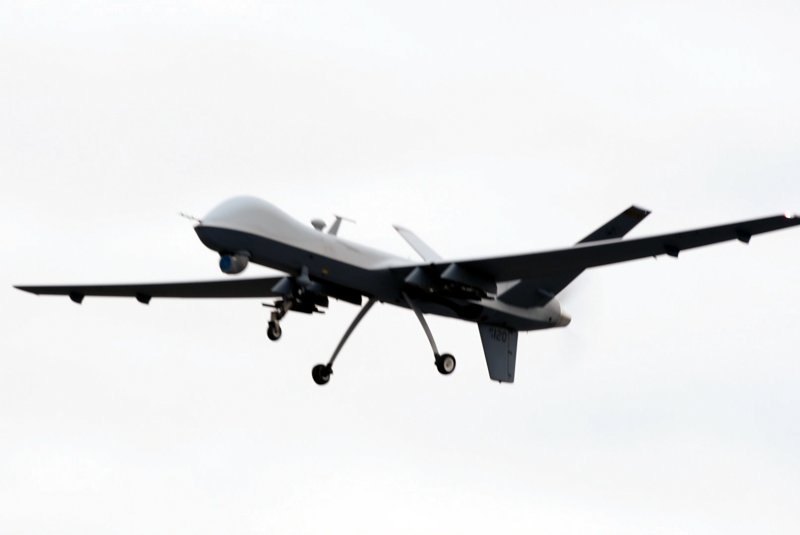U.S. Naval Research Laboratory and General Atomics Aeronautical Systems working to improve imaging capabilities of MQ-9 Reaper, Pictured, and Predator XP unmanned aircraft. U.S. Air Force photo
WASHINGTON, May 11 (UPI) -- Maritime-mode inverse synthetic aperture radar imaging capability is being integrated into the standard payload of U.S. Air Force unmanned aerial systems.
The effort is being undertaken by the U.S. Naval Research Laboratory, or NRL, and General Atomics Aeronautical Systems Inc.
Integration of the maritime-ISAR image capability with the Lynx Multi-Mode Radar on MQ-9 Reaper and Predator XP aircraft is to improve joint intelligence, surveillance and reconnaissance operations.
"Because ships and small watercraft at sea are usually in motion -- having both forward velocity and other linear and angular motions, for example, pitch and roll and heave and sway -- this creates a problem for typical ISAR platforms," said Thomas Pizzillo, head of the NRL Radar Analysis Branch. "The addition of a maritime-ISAR mode to the General Atomics Lynx radar, as a software only upgrade, is the most cost-effective alternative to introduce this capability to the MQ-9 fleet."
Synthetic Aperture Radar is a radar imaging method that uses multiple pulses transmitted from a moving platform. The received signals are combined to form a high quality 2D image of the ground-terrain of interest.
SAR algorithms assume the target scene is stationary and any motion in the scene shows up as a smear or streak in the image. ISAR algorithms assume the target itself is moving, and through a set of complex algorithms, calculates enhanced angular or cross-range resolution by analyzing subtle differences in range-rates caused by the target motion.
The integration of the two systems will result in images without the smearing or streaking, the NRL said.
"Often with unknown velocities, both linear and angular, it is a much more difficult problem because the motions are not known as in typical ISAR," Pizzillo said. "NRL has successfully adapted the necessary changes to ISAR image formation in which the rotational motion of the target is not known beforehand. This provides the end-user with an imaging software tool that can produce high-quality imagery in conditions with significantly complex target motion."















